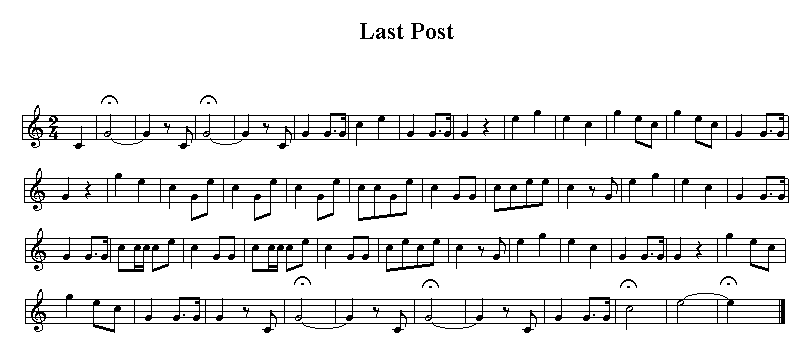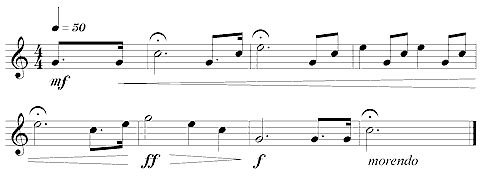



|
We must remember. If we do not, the sacrifice of those one hundred thousand Canadian lives will be meaningless. They died for us, for their homes and families and friends, for a collection of traditions they cherished and a future they believed in; they died for Canada. The meaning of their sacrifice rests with our collective national consciousness; our future is their monument. |
|
IntroductionThese wars touched the lives of Canadians of all ages, all races, all social classes. Fathers, sons, daughters, sweethearts were killed in action, were wounded, and many of those who returned were forever changed. Those who stayed in Canada also served -in factories, in voluntary service organizations, wherever they were needed.
As Canadians we often take for granted our current way of life, our freedom to participate in cultural and political events, and our right to live under a government of our choice. The Charter of Rights and Freedoms in our constitution ensures that all Canadians enjoy protection under the law. The Canadians who went off to war in distant lands went in the belief that such rights and freedoms were being threatened. They truly believed that "Without freedom there can be no ensuring peace and without peace no enduring freedom." In remembering their service and their sacrifice, we recognize the tradition of freedom they fought to preserve. These men and women had faith in the future and by their acts gave us the will to preserve peace for all time. On Remembrance Day, we acknowledge the courage and gallantry of those who served their country. During times of war, individual acts of heroism occurred frequently; only a few were recorded and received official recognition. In remembering all who served, we recognize the many of willingly endured the hardships and the fear so that we could live in peace. The Poppy and In Flanders FieldsEach November, over thirteen million poppies blossom in Canada. They blossom on the jackets, dresses and hats of nearly half the Canadian population and they have blossomed for almost 75 years, since 1921. The poppy is the symbol that individuals use to show that they remember those who were killed in the wars and peace keeping operations that Canada has been involved in.The association of the poppy to those who had been killed in war had existed for at least 110 years prior to being adopted in Canada. There are records of a correspondent who, during the Napoleonic War, wrote of how thickly poppies grew over the graves of soldiers in the area of Flanders, France.
John McCrae was a tall, boyish 43-year-old member of the Canadian Medical Corps. He was an artillery veteran of the Boer War in South Africa and was described as a person with the eye of a gunner, the hand of a surgeon, and the soul of a poet when he went into the line at Ypres on the 22nd of April 1915. April 22, was the first time that the enemy used poison gas, but the first attack failed and so did the next wave and the next. In fact, for 17 days and nights the allies repulsed wave after wave of the attacking enemy. McCrae wrote. One can see the dead lying there on the front field. And in places where the enemy threw in an attack, they lie very thick on the slopes of the German trenches. Lieutenant-Colonel McCrae, worked from a dressing station on the bank of the Yser Canal, dressing hundreds of wounded and never removed his clothes for the entire 17 days. At times the dead and wounded actually rolled down the bank from above his dugout. At other times, while awaiting the arrival of batches of wounded, he would watch the men at work in the burial plots which were quickly filling up. In time, McCrae and his unit were relieved and he wrote home. We are weary in body and wearier in mind. The general impression in my mind is one of a nightmare. Lieutenant Colonel McCrae came away from Ypres with 13 lines scrawled on a scrap of paper. The lines were a poem which started: In Flanders fields the poppies blow. These were the lines which are enshrined in the innermost thoughts and hearts of all soldiers who hear them. John McCrae was their voice. The poem circulated as a folk song, by word of mouth and all who hear it are deeply touched. In the United States for example, the poem inspired the American Legion to also adopt the poppy as the symbol of Remembrance.
The poem speaks of Flanders fields, but the subject is universal - the fear of the dead that they will be forgotten, that their death will have been in vain. Remembrance, as symbolized by the poppy, is our eternal answer which belies that fear. Sadly, Lieutenant Colonel John McCrae died of pneumonia at Wimereux near Boulogne, France on the 28th of January 1918 when he was 44 years old. Between the crosses, row on row, That mark our place; and in the sky The larks, still bravely singing, fly Scarce heard amid the guns below. We are the Dead. Short days ago We lived, felt dawn, saw sunset glow, Loved, and were loved, and now we lie In Flanders fields. Take up our quarrel with the foe, To you from failing hands we throw The torch, be yours to hold it high. If ye break faith with us who die We shall not sleep, though poppies grow In Flanders fields For millions of Canadians the poppy has long been the flower of Remembrance. It originally was a reminder of the blood-red flower which grew in the fields where many Canadians died in a place called Flanders. It remains the flower of Remembrance.
Importance of Remembrance Day TodayIn schoolrooms across Canada for a number of years students have discussed Remembrance; recognizing the sacrifices which others made for Canada but unsure of how they themselves could respond. What could they do? How could they live up to the expectations of the men and women who gave their lives for Canada and future generations? Today, there is an answer. It was always there only now it can be seen much more clearly. It has to do with unity.Canadian unity is not as strong today as it once was. When men from all parts of Canada came to a place called Vimy Ridge in 1917 everybody said that it was impossible to take the Ridge from the enemy. In a very important battle on a very cold day the Canadians did what nobody thought was possible. They took Vimy Ridge. When the guns stopped, the Canadians were very happy. Not so much for the victory itself but for the difficult thing they had done together. They were proud to be Canadians. Some of them who were wounded and waiting to be shipped to hospital lay on stretchers in tunnels in the earth. They carved maple leaves on the wall. It was a good time to be a Canadian. In another war when the guns stopped at a place called Dieppe, the Canadians suffered a terrible defeat. This time Canadians from East and West shared a defeat. And as the wounded, ragged soldiers were marched away to prison camps, they marched proudly, knowing that they had shared something difficult. It was a sad time to be a Canadian. Thousands of young men from all parts of Canada faced death together at Dieppe. You can see their graves and read their names on the stones. The stones speak eloquently of racial and religious origins. They speak of men with a common cause: Canada. In Canadian schoolrooms today there are students whose parents, or even themselves, remember other wars. Some remember the terrible ordeal of escaping to freedom. To them the poppy can be a symbol of that freedom. But it is important for all of us to remember that unity of Canadians in wartime enables all of us to enjoy freedom. Although Canada now has repatriated her constitution, the spirit of a common cause is lacking. We no longer share difficult things with a sense of unity. The poppy, then, is a reminder of the need: a challenge to each of us to seek out that spirit of unity which sustained our forefathers and our country. Like the constitution in 1982, Canada brought home its Tomb of the Unknown Soldier in 2000 and laid him to rest in a special memorial service in Ottawa. Last PostThe Last Post is the trumpet or bugle call sounded at 10 pm each night to inform soldiers that they should be inside their quarters for the night. It is also sounded at military funerals and commemorative services... to indicate that the soldier has completed his life's work and has entered into his rest. |

 Listen to the "Last Post" [.mid] Listen to the "Last Post" [.mid]The Last Post is the Canadian version of the American "Taps" but should not be intermixed. At many unofficial Canadian ceremonies, "Taps" might still be used because it is more common to us, but should not be used for Canadian events. Taps
 Listen to the "Taps" [.wav] Listen to the "Taps" [.wav] |
